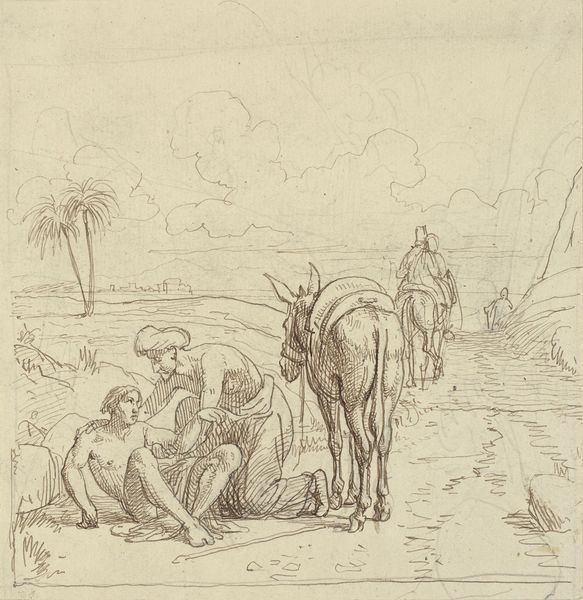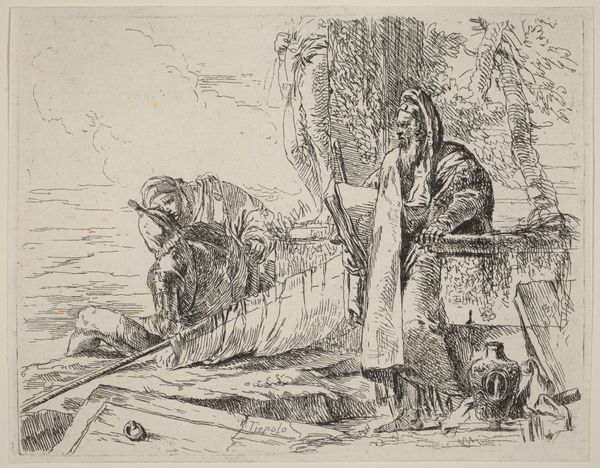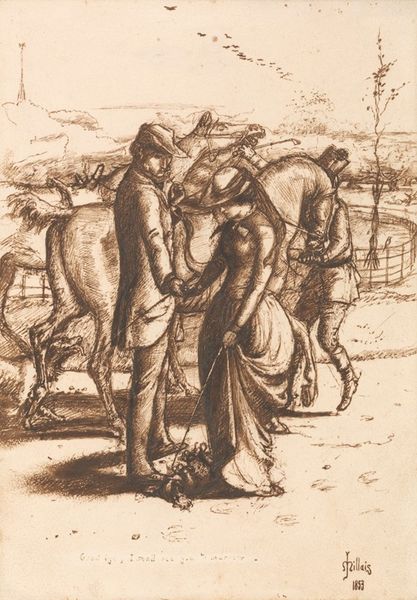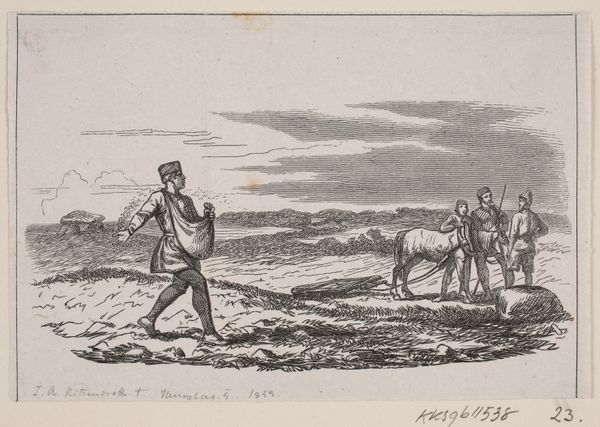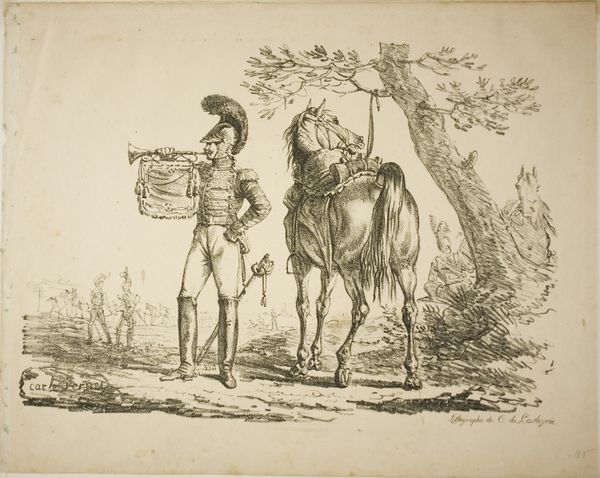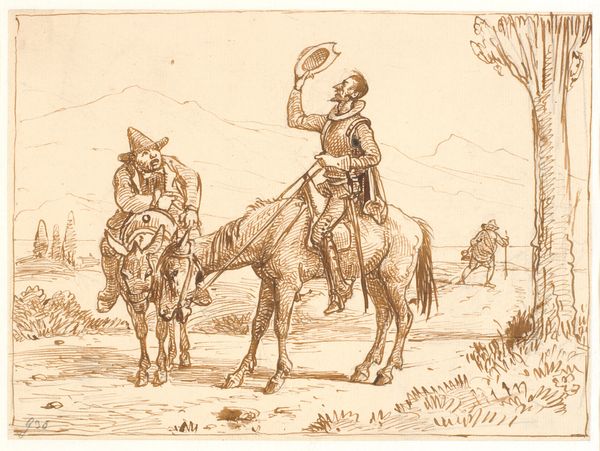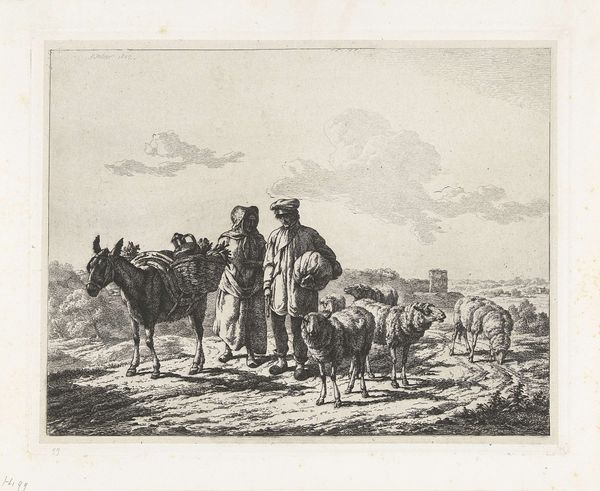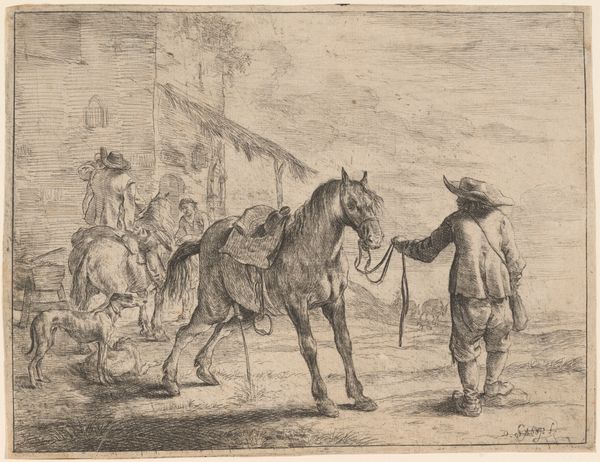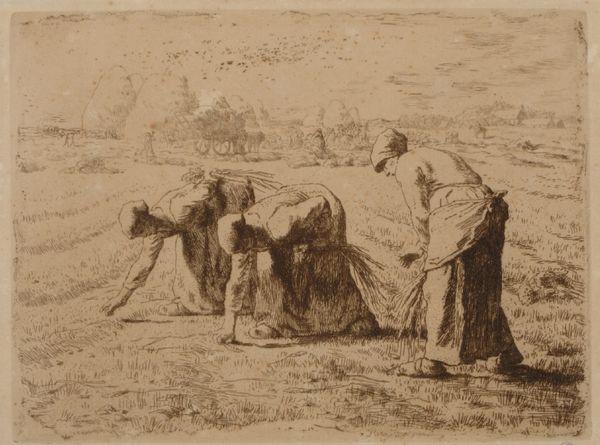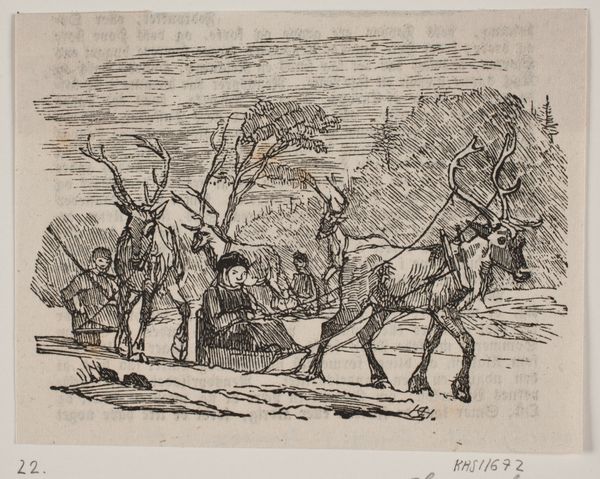
Den barmhjertige samaritan ledsager den sårede 1810 - 1873
0:00
0:00
drawing, ink
#
drawing
#
landscape
#
figuration
#
ink
#
romanticism
Dimensions: 188 mm (height) x 212 mm (width) (bladmaal)
Wilhelm Marstrand rendered this ink drawing, titled 'The Good Samaritan Accompanies the Wounded Man,' sometime in the 19th century. The central motif, a man aiding another atop a donkey, carries echoes of ancient virtue. Consider how such a scene pervades cultural memory, reminiscent of Christ's entry into Jerusalem – a symbol of compassion and humble service. Yet, the Samaritan is not a king, but a figure of social marginality, one who transcends prejudice to act humanely. The act of lifting, of burden-sharing, appears throughout art history. It conjures images of Aeneas carrying his father from Troy, or even classical depictions of filial piety. These echoes form a chain reaction, a living testament to the enduring human need for empathy. Here, Marstrand taps into something primal: the shared, subconscious desire for aid, for rescue. The symbol of the Good Samaritan persists, resurfacing in our collective consciousness. This resonates beyond mere religious instruction; it speaks to the very core of what it means to be human, continually prompting introspection and action across time.
Comments
No comments
Be the first to comment and join the conversation on the ultimate creative platform.
